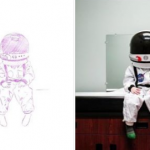Queen of Quarters
“Snail, Snail, Snail!”
“They’re going straight berries!”
“Can I get some wings over here?”
The 10-player Killer Queen behemoth that is the jewel of Arcade Super Awesome has only been plugged in for a few days but regulars are already hip to the slang of the game. On Wednesday nights, the usual $1 per match is waived and as a result, teams have formed, or at least eager groups of people glued to the joysticks, screaming directions, suggestions, and expletives. Like all great games, Killer Queen takes a minute to learn and a lifetime to master, and is best enjoyed in the company of others. Better yet, Killer Queen requires that collaboration and communication are key the experience. There’s a place to set your beer. It’s a phenomenon.
“I’ve never seen anything like it,” says Arcade Super Awesome curator John Geiger, who single-handedly brought the cabinet, of which only 12 are scattered around the United States, to Columbus. “It’s pure magic, really. It solicits strangers to play with you. The first night, people were literally pushing their teammates out of the way to pay for the next game.”
The brainchild of developers Nik Mikros and Josh DeBonis, Killer Queen originated as a strategic field game with live participants playing the parts of queen, warriors, grunts, and the infamous snail. The objective is a simple version of capture the flag, but with three methods to obtaining victory—either kill the other team’s queen three times, collect enough berries to sustain a fertile hive, or ride slowly ride the snail to base (perhaps the most rewarding win). Translating that chaos into a pixilated fantasy world onto massive dueling screens was logistical luck.
“We’ve done many live action games for the Come Out and Play festivals. Killer Queen was actually the last one we ever did,” says Mikros. “The game was incredibly popular everywhere we ran it, so we felt like it might be interesting to try to make a video game version of it.”
Like Geiger, Mikros and DeBonis were arcade aficionados by nature. Mikros’ first arcade memory recalls a time before video games, when mechanical contraptions and a chicken playing tic-tac-toe was the feature at New York City’s Chinatown Fair—where a very heralded Killer Queen now sits among fighting games and numerous variations on Dance Dance Revolution. It was instinct that the art and algorithms of the game play followed classics like Joust and the Mario Bros. franchise. As a competitor there is only one button that serves as jump, fly, or attack should you take on the stressful position as your team’s queen. Given the minimalism of moves, even if Killer Queen was set for more enhanced graphics, the retro feel of the aesthetic is a perfect foil.
“To be honest, the pixel art came out of a need for speed,” says Mikros.” I was doing all the art by myself and needed to be able to execute in a timely manner. I really like the look of it, but originally I was thinking of a more line art look like [Nintendo DS game] Ninja Town.”
Regardless of the game’s non-adherence to modern times, Killer Queen is a unique experience even if you’re not a “gamer.” In Killer Queen’s short stand in Columbus, I’ve seen kids, curious onlookers, baby boomers, and reluctant girlfriends get addicted after only a few rounds. Until leagues form, I can take solace in knowing Killer Queen has already formed a very social culture in our city. As fresh as it seems, it’s something that Mikros and DeBonis know they are obliged to expand upon.
“We’re tossing around a few ideas for the next game, but it’s tricky,” says Mikros. “We don’t want to make Killer Queen II, but we do want to make something that would compliment it well. There’s definitely a space between “classic” arcade games of the 80s and 90s and the more modern shooters and drivers that we think we can explore.”
For more information and a tutorial before you choose to tackle the Killer Queen, visit killerqueenarcade.com.
BROUGHT TO YOU BY






